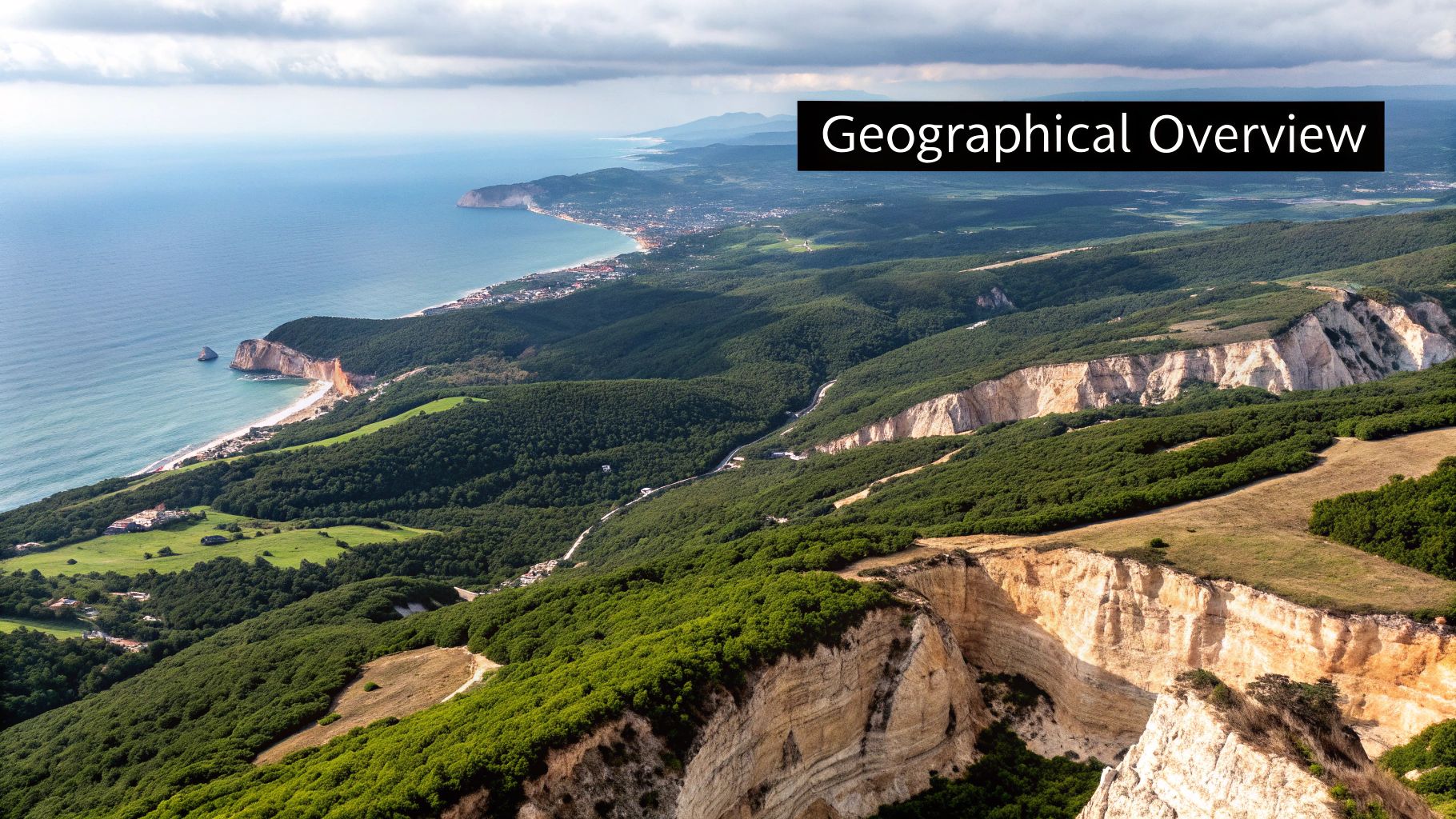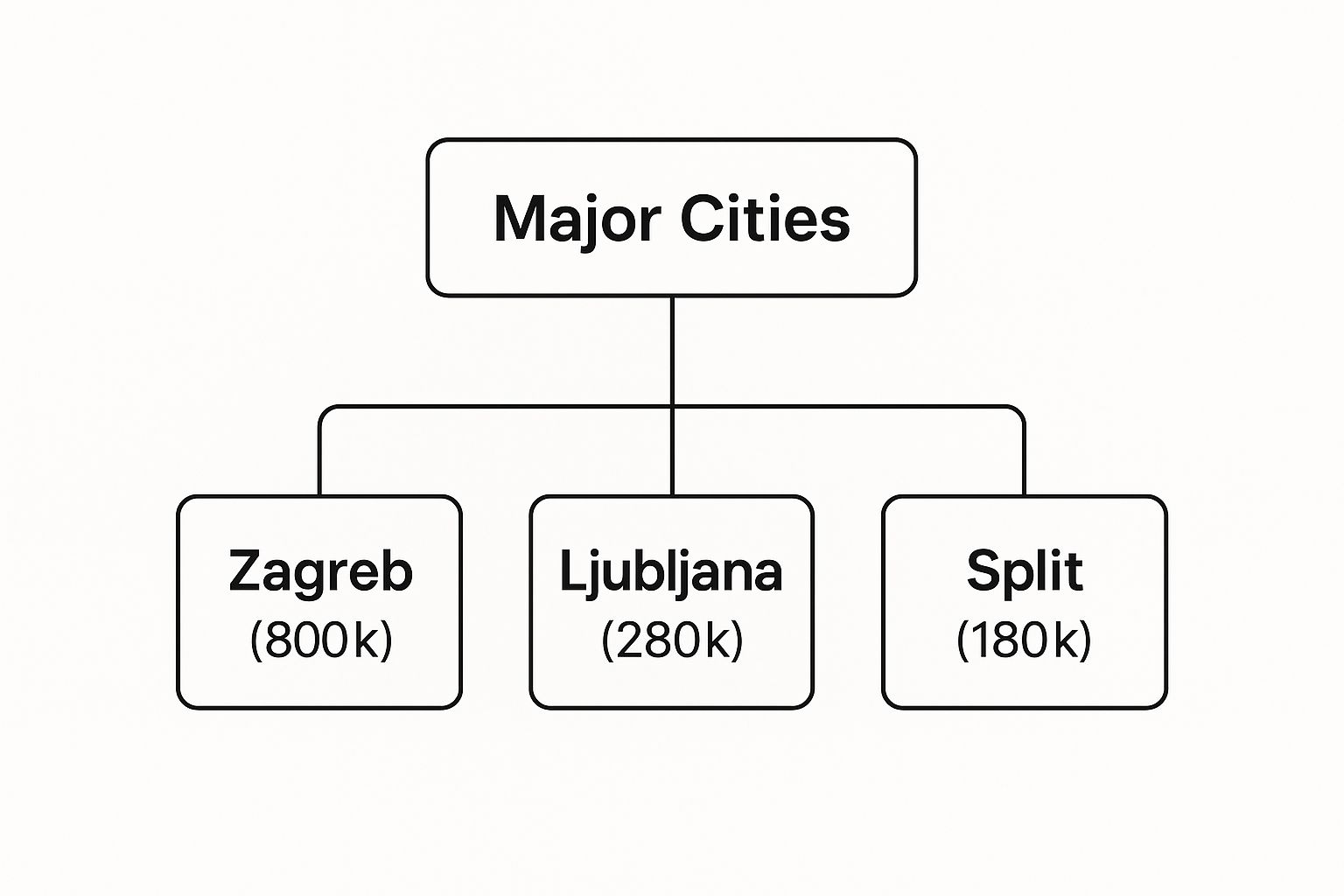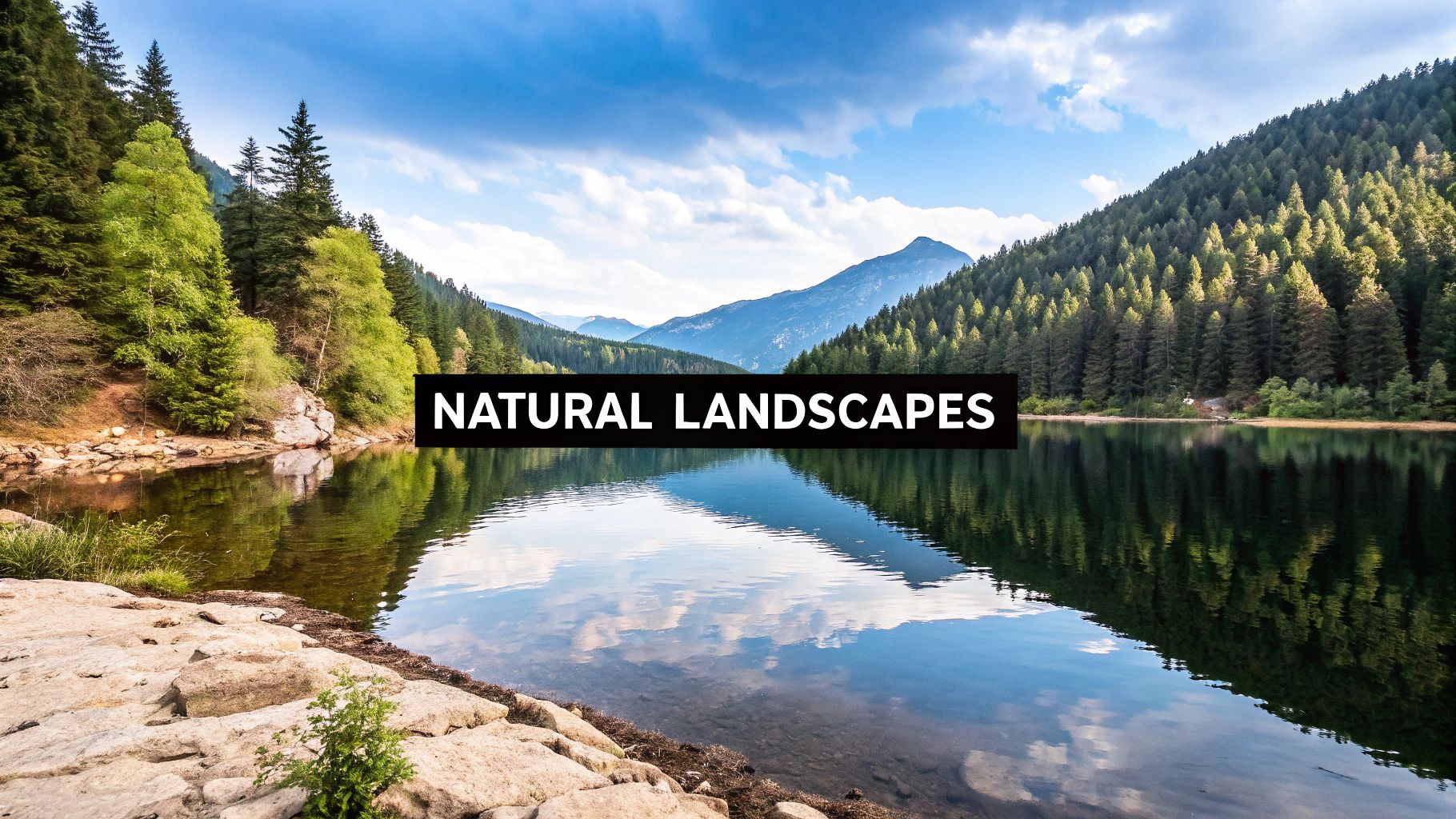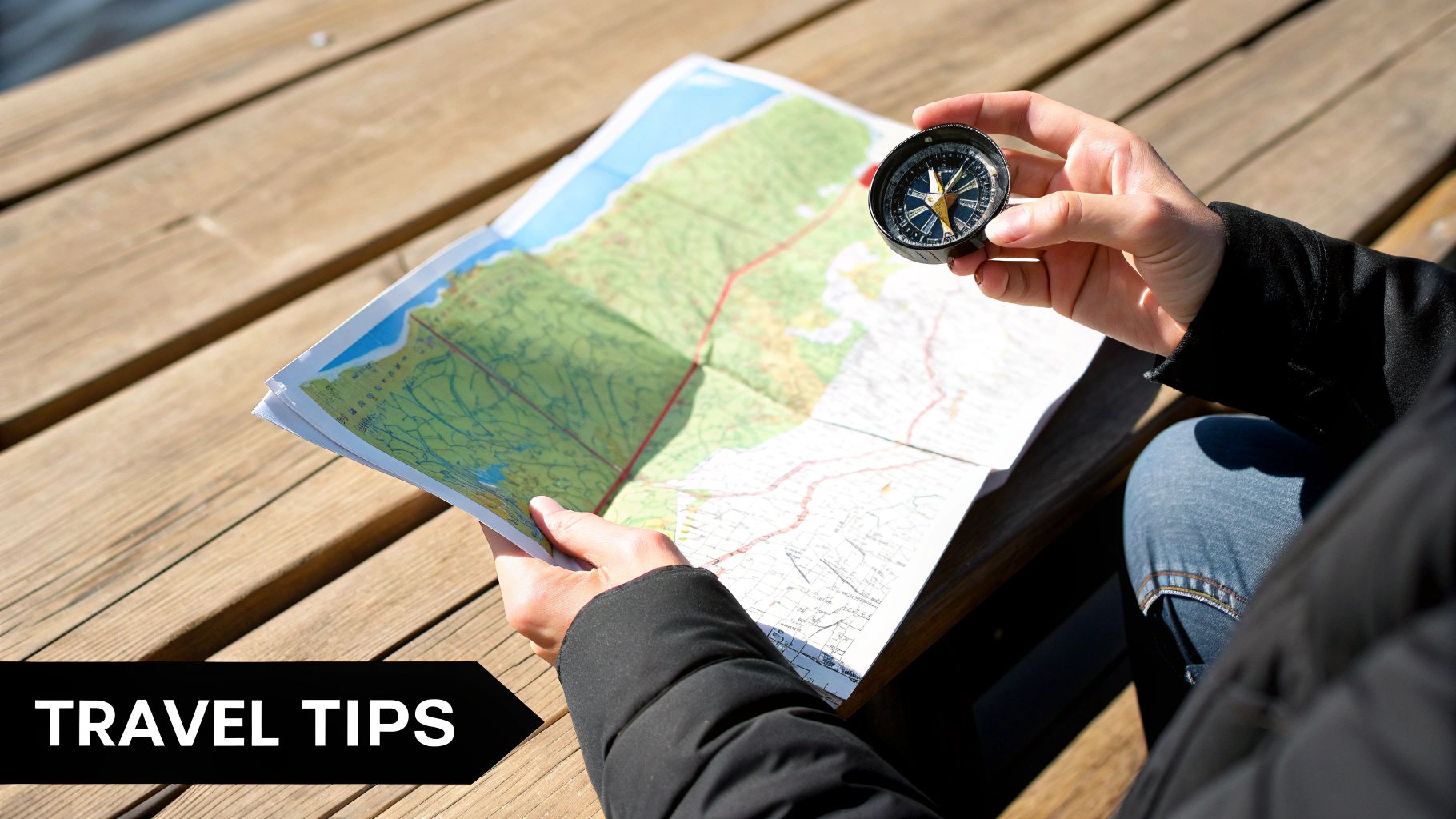Why These Two Countries Work Perfectly Together
Imagine planning a European adventure. You want something seamless, where crossing borders feels like turning a page in a captivating novel, not navigating a bureaucratic maze. That's exactly what Croatia and Slovenia offer: a perfectly paired travel experience that elevates any itinerary. Slovenia, with its charming Alpine villages and fairytale-like capital, Ljubljana, acts as a gentle introduction to the Balkan region. Then, as you journey south, Croatia unfolds along the Adriatic Sea, a dramatic coastline dotted with ancient cities whispering stories of centuries past.
Their contrasting landscapes add to this unique dynamic. Slovenia, a compact country of 20,273 square kilometers, packs a surprising amount of diversity into its borders, from the majestic Julian Alps to the romantic canals winding through its capital. Croatia, on the other hand, stretches across 56,594 square kilometers in its distinctive boomerang shape, encompassing a vast array of terrains. This geographical interplay is a core reason why exploring these two countries together creates such a rich and rewarding travel experience.
Croatia's Diverse Geography
Take a look at this screenshot from Wikipedia, which showcases Croatia's varied geography, from its mountainous interior to its sprawling coastline:

This varied terrain highlights Croatia's potential for both coastal relaxation and inland exploration, making it a natural complement to Slovenia's blend of mountain adventures and urban delights.
Their shared history, including time spent within the Austro-Hungarian Empire, has woven cultural connections between the two nations, adding another layer to their compatibility. Furthermore, their complementary climates allow for year-round travel. Whether you're dreaming of hitting the snowy slopes or basking on sunny beaches, Croatia and Slovenia have something to offer in every season. If you're looking for inspiration, check out this 14-day Eastern European tour that seamlessly incorporates both countries.
Modern infrastructure further simplifies travel between the two. Interestingly, the border between Croatia and Slovenia stretches for approximately 670 kilometers. This border wasn't fully defined when both nations gained independence from Yugoslavia in 1991, leading to a series of territorial disputes. You can learn more about the Croatia-Slovenia border disputes if you're interested in delving deeper into their shared history. Ultimately, these two countries demonstrate how distinct yet complementary elements can combine to create a truly unforgettable travel experience.
Decoding the Regions That Matter Most
Think of Croatia and Slovenia as two sides of the same coin, each offering a unique flavor of the Balkans. Slovenia, though smaller, packs a punch with its diverse landscapes. Imagine strolling through Ljubljana, the capital, with its charming baroque architecture reminiscent of Prague. Picture yourself kayaking across the serene Lake Bled, its island church a perfect backdrop for a postcard. Then, shift gears and envision hiking through the Julian Alps, stopping at a cozy mountain hut for a hearty stew. Finally, unwind in the Vipava Valley, its rolling vineyards rivaling the beauty of Tuscany.
Slovenia's diversity makes it a perfect destination for those who crave variety in a short trip. It's like a "greatest hits" album of European experiences, all within easy reach.
Croatia, on the other hand, unfolds like a historical epic. Istria, in the north, exudes Italian elegance. Think of hilltop towns like Motovun and Rovinj, their cobblestone streets whispering tales of Renaissance artistry. Zagreb, the capital, buzzes with modern energy while still echoing the grandeur of its Austro-Hungarian past. Finally, Dalmatia, along the coast, embodies the quintessential Croatian experience. This is where you'll find Split's Diocletian's Palace, where Roman ruins are woven into everyday life, and Dubrovnik's medieval walls, a backdrop made famous by Game of Thrones.
Croatia offers a deeper dive into history and culture, with each region presenting a distinct chapter in the country's story.

This infographic illustrates the population sizes of major cities in Croatia and Slovenia. Notice how Zagreb's population dwarfs other cities in the region, boasting nearly three times the number of residents as Ljubljana. This gives you a sense of the scale and urban feel of Croatia's capital.
](https://cdn.outrank.so/0b238060-7acd-470c-af16-9758e86bf654/d21bc0a4-fa25-43bf-8081-2a735cf37cf6.jpg)
This screenshot, taken from Wikipedia, shows the administrative regions of Croatia. The country is divided into 20 counties, plus the city of Zagreb, reflecting the administrative structure behind the diverse regions we've discussed.
To help you visualize the distinct flavors of each region, I've created a table summarizing their key characteristics:
Essential Regions: What Makes Each Area Special
Compare the distinctive character, key attractions, and ideal travel seasons for Croatia and Slovenia's most rewarding regions.
| Region | Country | Must-See Highlights | Travel Personality | Perfect Season |
|---|---|---|---|---|
| Istria | Croatia | Hilltop towns (Motovun, Rovinj), coastal drives | Art & History Buff | Spring/Fall |
| Zagreb | Croatia | Austro-Hungarian architecture, museums | Urban Explorer | Spring/Fall |
| Dalmatia | Croatia | Diocletian's Palace (Split), Dubrovnik city walls | History & Beach Lover | Summer |
| Ljubljana | Slovenia | Baroque architecture, castle, Ljubljanica River | City Hopper | Spring/Summer |
| Lake Bled | Slovenia | Island church, castle, hiking trails | Nature Enthusiast | Spring/Summer |
| Julian Alps | Slovenia | Hiking, mountain huts, stunning views | Outdoor Adventurer | Summer |
| Vipava Valley | Slovenia | Wine tasting, rolling vineyards, charming villages | Wine Connoisseur | Spring/Fall |
As you can see, each region caters to different travel styles. Whether you're a history buff, an adventure seeker, or a foodie, Croatia and Slovenia offer a wealth of experiences. In the next section, we'll delve deeper into how to match these regions with your specific interests and create an unforgettable itinerary.
Mastering the Art of Getting Around
Getting around between Croatia and Slovenia is easier than you might think once you understand how they connect. Think of the main travel routes as natural arteries – highways flowing through valleys and along coastal plains, creating scenic drives that feel almost destined. For example, Croatia's A1 highway acts as a central spine, connecting Zagreb to Split and Dubrovnik. Similarly, Slovenia's well-maintained highways seamlessly link to routes leading to Ljubljana and beyond to Austria or Italy.
But sometimes, the fastest route isn't the most rewarding. Imagine the coastal road that winds its way from Slovenia through Istria and down to Dalmatia. This turns a simple transfer into a scenic adventure, allowing you to discover medieval hilltop towns and charming coastal villages you’d otherwise miss. Train travel, while not as extensive, offers a unique perspective. Watching the landscape change from Slovenia's lush green hills to Croatia's varied terrain creates a sense of anticipation that flying just can't match. For those interested in exploring train travel further, check out these Train Travel Tips for Solo Travelers in Europe.
Bus networks, on the other hand, reach smaller towns and villages often inaccessible by car, and local drivers often share insider tips about hidden gems along the way.

This screenshot from Rome2rio illustrates the various transportation options available between Slovenia and Croatia. The map clearly shows the major highways and train lines connecting key cities, giving you a visual representation of how well-connected these two countries are. The concentration of routes, especially along the coast and between major cities, highlights how easy it is to explore both countries using a mix of transportation.
Understanding these options allows you to plan logistics that feel smooth instead of stressful.
Planning Your Route
Let's explore some of the most practical routes for different travel styles, from efficient city-to-city hops to relaxed scenic drives, turning logistical choices into memorable parts of your trip. To help you visualize the options, I've compiled a table summarizing key routes and travel options.
To help you compare different routes and travel options, take a look at the table below:
Key Routes and Travel Options Between Major Cities
Essential connections with realistic travel times, costs, and insider tips for different transportation methods
| Route | Distance | Driving Time | Bus/Train Options | Scenic Value |
|---|---|---|---|---|
| Zagreb – Ljubljana | ~140 km | ~1.5 hours | Frequent buses and trains | Moderate |
| Ljubljana – Lake Bled | ~55 km | ~1 hour | Regular buses and trains | High |
| Zagreb – Split | ~400 km | ~4-5 hours | Buses are more common than trains | High (coastal route) |
| Split – Dubrovnik | ~230 km | ~3-4 hours | Buses and ferries available | High (coastal route) |
| Rijeka – Pula (Istria) | ~100 km | ~1.5-2 hours | Buses readily available | High (coastal route) |
This table gives you a starting point for planning your journeys. Remember that driving times can vary depending on traffic and road conditions, while bus and train schedules can change seasonally. Always double-check current timetables and factor in potential delays.
By understanding the transportation network and comparing different routes, you can transform travel logistics from a chore into an exciting part of your Croatian and Slovenian adventure.
Navigating Borders Like a Seasoned Traveler
Crossing between Croatia and Slovenia is usually pretty simple, especially since both countries are part of the EU. But understanding the history behind these crossings can add a whole new dimension to your trip. Think of it like this: while your EU passport lets you breeze through, those border points tell a story of diplomacy and changing cultural ties.
The relationship between Slovenia and Croatia has involved decades of talks, territorial disagreements, and finding ways to work together – a history most tourists don't see. The smooth crossings we enjoy now represent major diplomatic wins, turning potential obstacles into open doors for exploration. When planning your route, consider using tools like a geo audit to optimize your journey.
Practical Tips for Smooth Crossings
Being prepared is key, especially in the summer when traffic to Croatian beaches can cause backups. Knowing which border crossings handle heavy traffic best, having your documents ready, and understanding what to expect can transform potential travel stress into a smooth transition. It's a bit like choosing the right lane at a toll booth – some are faster, while others might have a better view.
Some crossings offer scenic routes or handy places to stop, while others prioritize speed and efficiency. Remember, the Slovenia-Croatia border dispute has historical roots going back to the breakup of Yugoslavia. The disagreement really kicked off after both countries declared independence in June 1991. The Badinter Commission, formed in 1991, played a key role in confirming the borders of the former Yugoslav republics as the borders of the new independent countries. You can learn more about this fascinating history here.
Understanding Border Dynamics
This Wikipedia screenshot shows how complex the Croatia-Slovenia border actually is. Those winding lines and different markers show the intricacies of defining this international boundary. It's a visual representation of the detailed effort needed to establish a clear and mutually agreed-upon border. Speaking of helpful information, you might also find this useful: What to Do When Flight Is Cancelled.
We’ll guide you through the most tourist-friendly crossings, explain any extra security measures at specific points, and share tips from experienced travelers to ensure a smooth border experience. Whether you're traveling by car, bus, or train, understanding the practical aspects and historical background of these borders enriches your trip and helps you appreciate the international cooperation that makes modern European travel so easy.
Crafting Itineraries That Flow Naturally
Smart itinerary planning can elevate a trip from simply "good" to truly unforgettable. The magic lies in understanding how Croatia and Slovenia complement each other, creating a richer, more harmonious experience. Think of your itinerary like a musical piece, where each movement builds on the previous one. Slovenia often serves as a wonderful prelude, with Ljubljana's manageable size and central location providing a comfortable starting point, particularly for first-time visitors. Lake Bled and the Julian Alps add a touch of enchantment, setting the scene for the adventures to come.
From Slovenia, the narrative flows seamlessly into Croatia. Zagreb offers a vibrant urban interlude, Plitvice Lakes National Park introduces a breathtaking display of natural beauty, and the Dalmatian Coast provides a grand finale of island hopping and historical exploration. The shared history along the Croatia-Slovenia border also adds a layer of depth to your journey. Both countries boast a rich and complex past, with Slovenia's territory having been part of the Roman Empire as far back as the 2nd century BC. Learn more about Slovenian history here.
Building Your Ideal Route
Seasoned travelers understand the importance of designing an itinerary that follows the natural contours of the geography. A classic route, for instance, takes you from Ljubljana to Dubrovnik, allowing you to witness a dramatic transformation in landscapes along the way. Another option, an "Alpine to Adriatic" journey, unfolds like a captivating story, beginning amidst towering mountain peaks and culminating in the tranquil embrace of the Adriatic Sea.

This Google Maps screenshot demonstrates the close proximity of Ljubljana and Zagreb, highlighting the ease of travel between these two capital cities. The map illustrates how a well-crafted route can enhance your experience by minimizing travel time and maximizing your time at each destination. When planning, remember to consider border regulations. These rules can impact what you're allowed to bring across the border, similar to regulations like Navigating the Pittsburgh Plastic Bag Ban. For some inspiration, you might also enjoy looking at Best Day Trips from Amsterdam.
Timing your trip to coincide with a particular season is also essential. It's about more than just the weather. Understanding when different destinations truly shine allows you to immerse yourself in local festivals, avoid the hustle and bustle of peak tourist season, and experience each region at its most authentic. Later, we'll delve into proven itinerary templates that cater to different travel styles, from cultural immersion to active adventures, offering flexible frameworks that can be tailored to your interests and pace.
Choosing Your Navigation Tools Wisely
Modern travel navigation isn't just about picking between a paper map and your phone; it's about having the right tools for every scenario. Digital maps have revolutionized how we explore. Imagine getting real-time traffic updates that steer you clear of those summer traffic jams en route to Croatia's stunning beaches. Or picture instantly finding restaurant recommendations when hunger strikes in a charming Slovenian town. Digital maps can even uncover hidden gems just a short detour from your planned route. Apps like Google Maps are indispensable in cities, while offline options like Maps.me become essential when hiking through Slovenia's secluded valleys or exploring Croatia's tranquil islands, where cell service can be patchy.
But don't discount the power of a physical map! They provide a perspective that digital screens simply can't replicate. Think about it: a paper map shows you the overall connections between regions, revealing scenic backroads that might be overlooked by algorithms. Plus, they're a reliable backup when technology lets you down. The most savvy travelers use a combination of both: digital tools for real-time directions and locating services, and paper maps for broader planning and understanding the geographical context.
Combining Digital and Physical Maps
Paper maps are like having a bird's-eye view of your entire trip. They help you visualize your journey, identify intriguing detours, and stay oriented even if your phone battery dies during a long hike. A digital map, like the Google Maps screenshot below, provides a detailed close-up of a specific area.
This level of detail allows you to zoom in and meticulously plan your route, highlighting the benefits of digital maps for navigating complicated city streets or pinpointing specific landmarks.
Here's an analogy: a physical map is like seeing the broad contours of a country's musical landscape, while a digital map lets you focus on the individual notes and melodies of each region. Paper maps help you grasp the "why" of your journey – the bigger picture – while digital maps assist with the "how" – the turn-by-turn directions. Throughout this guide, we'll delve into how different tools serve various purposes, from city exploration to navigating remote areas, helping you develop a navigation strategy that keeps you confident and on track during your Croatian-Slovenian adventure.
Your Map Mastery Action Plan
By now, you've gathered a wealth of knowledge to transform your Croatian-Slovenian adventure. Instead of just a list of places, you're envisioning a cohesive journey, seamlessly transitioning from the Alpine charm of Slovenia to the magic of the Adriatic coast in Croatia. Your map skills are no longer just about getting from point A to point B. You understand how these two countries complement each other, why specific routes offer richer experiences, and how to plan logistics that enhance, rather than hinder, your travels.
Combining Strategies for Travel Success
Think of the key strategies we’ve covered as sections of an orchestra, each playing its part to create a harmonious whole. Understanding each region’s unique character helps you allocate your time wisely. Mastering transportation links ensures smooth transitions between destinations. And knowing how to choose and use navigation tools keeps you flexible and confident on the road.
The most memorable adventures often arise when you’re prepared for the unexpected. Imagine knowing your route so well that you can confidently take an intriguing detour. Picture understanding border procedures so thoroughly that you can explore remote areas without hesitation. Think about having reliable backup navigation for those times when things don't go according to plan. For those with an interest in museums, our guide on the top 5 museums to see while in Vienna might be a valuable resource.
Croatia and Slovenia are particularly rewarding for travelers who see them as interconnected pieces of a larger story, not just separate countries. Whether you’re dreaming of a romantic escape, a family adventure, or a solo journey through hidden villages and national parks, understanding maps lays the foundation for truly unforgettable experiences.
Embracing Spontaneity Through Preparation
This screenshot from Lonely Planet showcases a suggested route through Croatia, highlighting must-see destinations. It perfectly illustrates how you can establish a basic framework for your trip while still leaving room for spontaneity and on-the-fly exploration.
This image demonstrates the power of visual aids like maps in planning and personalizing your journey, whether you’re following a recommended itinerary or blazing your own trail.
Remember, the most rewarding discoveries often happen when you're well-prepared enough to seize unexpected opportunities. A solid understanding of your route gives you the freedom to explore those enticing detours. Knowing the ins and outs of border crossings empowers you to confidently venture off the beaten path. Keep your curiosity alive and your navigation skills sharp – Croatia and Slovenia offer a lifetime of exploration for travelers who know how to unlock the secrets of their diverse landscapes.

Hi there! My name is Jenny, and I’m a travel writer who is endlessly curious about the world and always on the hunt for the next best-kept travel secret. My expertise lies in creating destination guides that enable you to travel smarter and especially if you travel solo.
My bylines have appeared on blogs, travel sites, and content agencies, and I’m always ready for the next adventure (and next great caffeine fix). In between assignments, you can find me trawling through a bazaar, sampling street food, or getting lost in an unfamiliar metropolis by choice.

